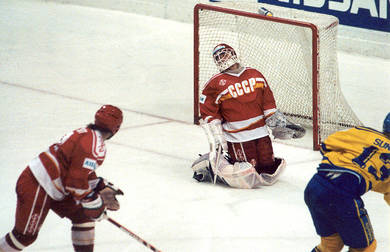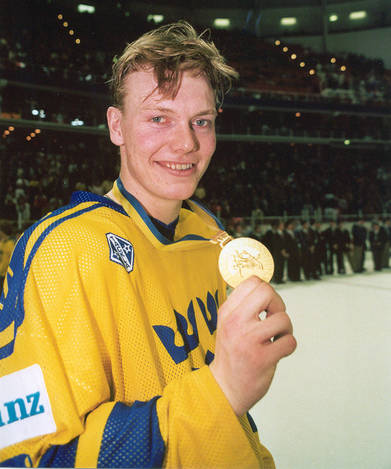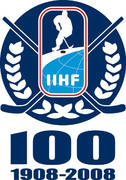

Story #32 Sundin’s marvellous goal ends Soviet Union’s hockey eraMay 4, 1991 — Turku, Finland
Mats Sundin, only 20 at that time, scored what many consider as the “best goal in the history of the IIHF World Championship” when he single-handedly gave Sweden gold in 1991 in Turku. But it isn’t only the exceptional end-to-end rush that counts into the overall verdict. The performance capped a season which began with Sundin escaping his country as villain – in what also was the last hockey game ever to be played by the Soviet Union national team.  As the medal round began, Sweden was part of a four-team medal race which also included the Soviet Union, Canada and USA, in the last World Championship that was not decided with a winner-takes-all gold medal game.  With the Canadian players in the stands counting down every second, Mats Sundin decided to take the things into his own hands. The clock showed ten minutes left when Sundin took the puck behind his own net and started to charge towards the Soviet end on the right side. He weaved off two Soviet players in the neutral zone and he was not aware that the last red clad player waiting for him inside the blue line was Vyacheslav Fetisov, arguably the best defencemen in international hockey ever. About the Top 100 StoriesAs part of the IIHF's 100th anniversary celebrations, www.IIHF.com is featuring the 100 top international hockey stories from the past century (1908-2008). Starting now and continuing through the 2008 IIHF World Championships in Canada, we will bring you approximately three stories a week counting down from Number 100 to Number 11.
The Final Top 10 Countdown will be one of the highlights of the IIHF's Centennial Gala Evening in Quebec City on May 17, the day prior to the Gold Medal Game of the 2008 World Championship.
These are the criteria for inclusion on this list: First, the story has to have had a considerable influence on international hockey. Second, it has to have had either a major immediate impact or a long-lasting significance on the game. Third, although it doesn't necessarily have to be about top players, the story does have to pertain to the highest level of play, notably Olympics, World Championships, and the like. The story can be about a single moment — a goal, a great save, a referee's call — or about an historic event of longer duration — a game, series, tournament, or rule change. |
 Click here for the 100 Top Stories
|
|






